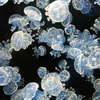Tropisms & Growth Regulation PDF
Document Details

Uploaded by RapturousGyrolite5789
Tags
Summary
This document provides an introduction to plant tropisms and growth regulation. It details different types of tropisms, focusing on phototropism and gravitropism, along with other factors impacting plant growth like seed germination and etiolation.
Full Transcript
tropisms & growth regulation INTRODUCTION tropisms: plant responses to environmental stimuli phototropism: growth in response to light positive ⇨ grows towards light negative ⇨ gro...
tropisms & growth regulation INTRODUCTION tropisms: plant responses to environmental stimuli phototropism: growth in response to light positive ⇨ grows towards light negative ⇨ grows away from light gravitropism/geotropism: growth in response to gravity positive ⇨ grows towards gravity negative ⇨ grows away from gravity other tropisms temperature touch pH communication chemicals water electric fields can be observed in specific regions or certain developmental phases specific regions ⇨ roots, shoots, flowers developmental phases ⇨ germination tropisms & growth regulation 1 PHOTOTROPISM positive ⇨ grows towards light example sunflowers will always face the sun allows plants to grow towards light (maximize usage of chemical energy) negative ⇨ grows away from light example - compass plant will orient its leaves parallel to the sun rays allows roots to grow deeper into the ground to find more nutrients & water bending of plants is caused by the accumulation of auxin auxin: hormone responsible for elongation; will accumulate in darker regions of plants STEM GRAVITROPISM stems or roots will move towards or away from force of gravity roots will always grow down (positive gravitropism) stem will grow up (negative gravitropism) physiological mechanism - usage of statoliths and amyoplasts statoliths are rocks in seeds used to show which direction gravity is aymloplasts are used to trigger biochemical signals to either initiate gravitropic growth tropisms & growth regulation 2 distance(cm) average rate = time (min SEED GERMINATION seeds respond to environmental stimuli when conditions maximize chance of survival conditions must sustain growth and development of seed factors that impact germination 1. light 2. temperature 3. water availability seed coat must be weakened phytochromes: photoreceptor that detects light for photosynthesis type I ⇨ activated by far red light type II ⇨ activated by red light form is determined by what wavelength hit it first ETIOLATION seeds usually germinate underground with limited light cotyledon requires light to photosynthesize sugars to support rapid growth etiolation: plants grown in the dark (lack of light) are pale, weak, and abnormally long tropisms & growth regulation 3 tropisms & growth regulation 4